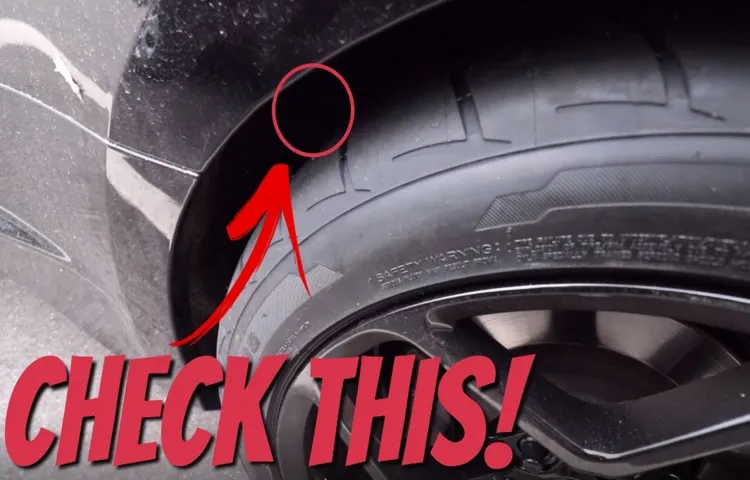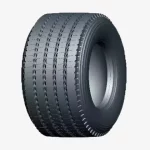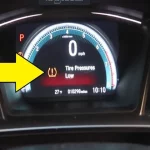Have you ever experienced a loud noise coming from your vehicle’s wheel well while driving? If yes, it’s likely that your tire is rubbing against the wheel well. This can be a worrisome situation, causing damage to your tire and compromising your vehicle’s safety. In this blog, we will explore the possible causes of tire rubbing against the wheel well, and provide you with some solutions to solve this problem.
So, let’s dive in and get to the bottom of this issue!
Table of Contents
Understanding the Issue
Have you ever experienced your tire rubbing against the wheel well when turning? It happens when you’re driving and you hear a subtle sound that eventually turns into a screeching noise. This issue occurs when your tire hits against the wheel well, causing friction that can lead to damage to both your tire and wheel well. It can also impact your car’s stability and steering control.
The cause of this issue could be due to various reasons such as a misaligned suspension, worn-out shocks or struts, loose wheel bearings, or even oversized tires. To prevent further damage to your vehicle, it’s essential to address this issue as soon as possible. Not only can it cause costly repairs, but it can also lead to potential accidents on the road.
So, if you notice any noise or difficulty turning, take it to a professional mechanic who can properly diagnose and fix the issue to ensure your safety and the longevity of your vehicle.
What Causes Tire Rubbing Against Wheel Well
Tire rubbing against the wheel well is not only irritating but can also damage your car. It happens when the tire comes in contact with the inner side of the wheel well while turning or going over bumps. There are various reasons for this issue, including the wrong tire size, damaged suspension, worn-out shocks, or broken wheel bearings.
Moreover, it can also happen if the wheel offset is incorrect, causing the tire to stick out too far or in too much. It is important to address this issue immediately as it can lead to uneven tire wear, reduced handling, and potential safety hazards on the road. Therefore, if you experience tire rubbing, make sure to visit a professional mechanic to diagnose and fix the problem before it causes major damage to your car.

Symptoms of Tire Rubbing or Grinding Against Wheel Well
Tire rubbing or grinding against the wheel well can be a common occurrence for drivers, and it’s important to understand the issue to avoid further damage to your vehicle. One of the most noticeable symptoms includes a grinding noise that can worsen as you accelerate or turn the car. You may also feel a vibration in the steering wheel or notice irregular tire wear.
This issue can be caused by a variety of factors, including tire pressure or size, suspension problems, or misaligned wheels. It’s important to have a professional inspect your vehicle if you experience these symptoms. Driving with this issue can be dangerous and may cause further damage to your car.
So, if you notice any strange noises or vibrations while driving, don’t ignore them and seek professional help immediately.
Solutions to Tire Rubbing Issue
If you’re experiencing tire rubbing against the wheel well while turning, there are a few solutions to consider. One option is to adjust the suspension to increase clearance between the tire and the wheel well. This may involve installing spacers or adjusting the suspension height, but it can prevent further damage to your tires and ensure smooth handling while turning.
Another solution is to replace the tires with ones that have a smaller overall diameter, which can help prevent rubbing by providing more space between the tire and the wheel well. Additionally, you can have your wheel alignment checked to ensure that the tires are properly aligned and aren’t rubbing due to an alignment issue. If you’re unsure what’s causing the issue or how to fix it, it’s always best to consult with a trusted mechanic or tire professional for advice.
Don’t ignore tire rubbing, as it can lead to premature tire wear and even dangerous handling conditions on the road.
Replacing Worn-Out Tires
If your vehicle’s tires are constantly rubbing against the wheel well or other parts of your car, it’s time to consider some solutions to this frustrating and potentially dangerous problem. One possible solution is to replace your worn-out tires. Worn tires can cause the vehicle to sit lower to the ground, allowing the tires to come into unwanted contact with other parts of the car.
When you’re shopping for new tires, it’s important to consider the size and type of tires that will fit your vehicle. You can also opt for tires that are more compatible with your driving style and the conditions in which you typically drive. By investing in new, high-quality tires, you can enjoy a smoother and safer driving experience while avoiding the issue of tire rubbing.
So, next time you’re experiencing tire rubbing, consider making the switch to new tires to solve the issue once and for all.
Correcting the Wheel Alignment
Tire rubbing can be a frustrating and potentially dangerous problem for drivers. A common solution to this issue is correcting the wheel alignment of the vehicle. Misaligned wheels can cause the tires to rub against the wheel well or other parts of the vehicle, leading to uneven wear, decreased fuel efficiency, and even a loss of control while driving.
Realigning the wheels can alleviate these issues and prevent further damage to the tires. A professional mechanic can use a specialized machine to measure the angles of the wheels and adjust them to the manufacturer’s specifications. While it may seem like a small and insignificant problem, correcting the wheel alignment can make a big difference in the performance and safety of your vehicle.
So, if you notice your tires rubbing or hear strange noises while driving, it may be time to consider a wheel alignment to keep your tires in tip-top shape.
Installing Proper Wheel Spacers
Wheel Spacers Do you often experience tire rubbing on your vehicle’s frame or suspension components when turning or going over bumps? If yes, installing proper wheel spacers can be the perfect solution to this problem. With the right wheel spacers, you can increase the distance between the wheels and the suspension components of your vehicle, preventing tire rubbing while also enhancing the overall stance and appearance of your ride. The process of installing wheel spacers involves mounting a hub-centric ring and bolt-on spacer onto the vehicle’s hub assembly to provide an extended base for the wheels to sit.
After installation, your wheels move outwards, providing a more aggressive look and better vehicle handling. However, it’s essential to use high-quality spacers that match the original specifications of your car. Wheel spacers that do not adhere to these standards may cause catastrophic vehicle failures.
Therefore, always consult an experienced professional who can choose the right spacers and help you install them correctly. Trust me; the proper installation of wheel spacers can significantly affect the handling and the overall safety of your car. So, don’t take this job lightly and invest in high-quality wheel spacers for a safe and enjoyable driving experience.
Preventing Tire Rubbing Issue
If you’ve ever noticed your tire rubbing against the wheel well when turning, it’s important to address the issue as soon as possible. First and foremost, make sure your tire pressure is at the recommended level for your vehicle. Overinflation or underinflation can cause the tire to bulge and rub against the wheel well.
If tire pressure isn’t the issue, it’s possible that your vehicle’s suspension system needs to be adjusted. This can be done by a professional mechanic, who can also check for any worn out or damaged suspension components. Additionally, be mindful of the weight you are carrying in your vehicle.
Overloading your vehicle can cause it to sag, leading to tire rubbing. Lastly, consider upgrading to a larger wheel and tire size, which can provide added clearance and prevent rubbing issues. By taking these preventative measures, you can ensure a safe and comfortable ride without the hassle of tire rubbing.
Regular Maintenance of Tires
Regular maintenance of tires is highly important to ensure their longevity and prevent any potential issues that may occur. One such problem that can arise with tires is rubbing against the wheel well or other nearby components. This can lead to tire damage, reduced performance, and even safety hazards while driving.
To prevent this issue, there are a few things you can do. First, make sure your tires are properly inflated to the manufacturer’s recommended pressure. This not only helps with performance, but also prevents unnecessary wear and tear on the tires.
Additionally, regularly inspect your tires for signs of rubbing or damage. If you notice any issues, take your vehicle to a professional mechanic to have it checked out. Finally, be mindful of any changes made to your vehicle, such as adding larger wheels or a lift kit, as these can affect the clearance between the tires and other components.
By taking these steps, you can ensure that your tires remain safe, effective, and problem-free.
Avoiding Potential Obstacles and Speed Breakers
When hitting the road, one of the most common concerns for drivers is the potential tire rubbing issue. Not only it is a frustrating problem to experience, but it can also cause significant damage to your car’s tires. To avoid this obstacle, one of the first things you should check is proper tire size.
It’s crucial to ensure that your car’s tires are the appropriate size for your vehicle. Additionally, keep an eye on your car’s suspension system as it plays a significant role in preventing tire rubbing. If your suspension is worn out or damaged, it can cause the tires to rub against the wheel well, resulting in damage to the tire and ultimately compromising your safety.
In addition, make sure that your car’s alignment is correctly set as misaligned wheels can also lead to tire rubbing. Take good care of your car’s wheels and tires by getting them checked and maintained regularly by experienced auto mechanics. By taking these preventative measures, you can avoid potential tire rubbing issues while driving, ensuring a smoother and safer ride.
Conclusion and Final Thoughts
In summary, the sound of a tire rubbing against a wheel well when turning can be quite alarming, and usually indicates a problem that requires attention. It’s like when your car is trying to tell you it’s not comfortable being squished up against the wall like that. So, it’s important to get it checked out and fix the issue before it becomes a bigger problem.
Just remember, a little rubbing may be okay at times, but too much can lead to a blowout and nobody wants to deal with that. Keep your tires happy and they’ll keep you rolling smoothly on the road.”
FAQs
What causes tire rubbing against wheel well when turning?
There are several reasons why tires rub against the wheel well when turning, such as worn out suspension components, wrong tire size or wheel offset, bent wheel, or collision damage.
Can tire rubbing against wheel well cause damage to the vehicle?
Yes, tire rubbing against the wheel well can cause damage to the tires, suspension components, and body panels over time, leading to uneven wear, noise, vibration, and safety issues.
How do I diagnose tire rubbing against wheel well?
You can diagnose tire rubbing against wheel well by inspecting the tires and wheel wells for signs of wear, damage, or rubbing marks, checking the suspension and steering components for play or damage, and verifying the tire size and offset for compatibility.
How do I fix tire rubbing against wheel well?
You can fix tire rubbing against wheel well by adjusting the tire pressure, replacing the worn out suspension or steering components, aligning the wheels, installing wheel spacers or fender flares, or changing the tire size or offset.
What is the cost of fixing tire rubbing against wheel well?
The cost of fixing tire rubbing against wheel well depends on the extent of damage, the parts needed for repair or replacement, the labor rates, and the location of the repair shop, but it can range from a few hundred to a few thousand dollars.
Can I drive a vehicle with tire rubbing against wheel well?
It is not recommended to drive a vehicle with tire rubbing against wheel well, as it can cause further damage or safety issues, such as loss of control, blown tires, or suspension failure.
How can I prevent tire rubbing against wheel well?
You can prevent tire rubbing against wheel well by maintaining the recommended tire pressure, avoiding overloading the vehicle, avoiding aggressive driving or off-roading, checking the alignment regularly, and choosing the right tire size and offset for your vehicle.



